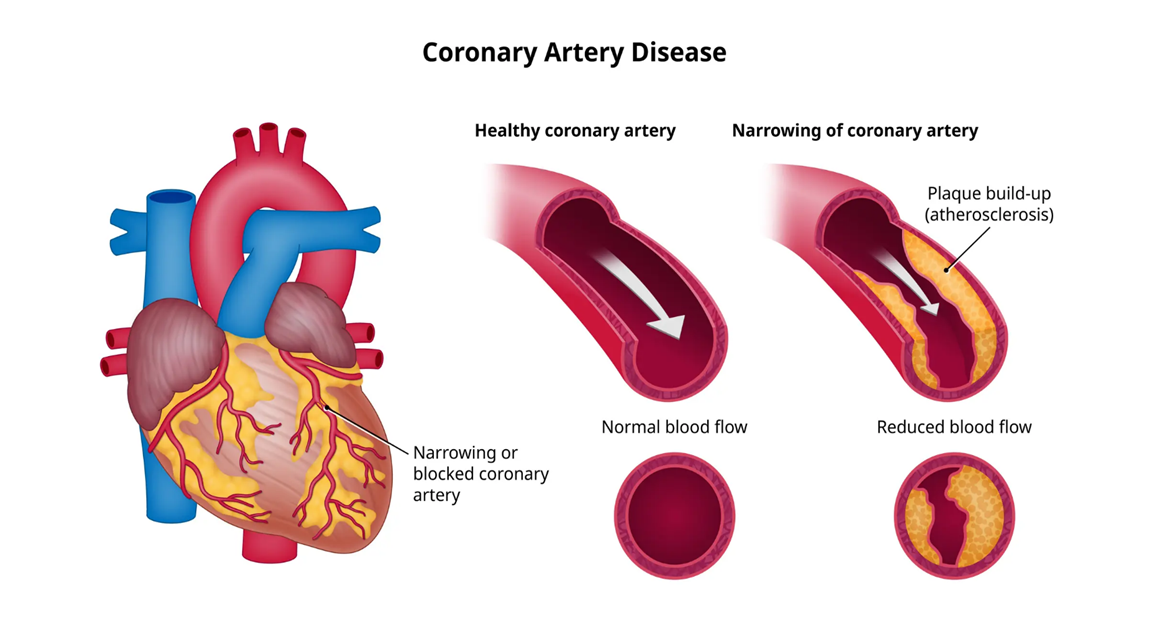The nurse is reviewing the client’s laboratory values. Which serum laboratory value indicates to the nurse that a prescription for atorvastatin is having the desired effect for a client at risk for coronary artery disease?
Low-density lipoprotein (LDL).
High-density lipoprotein (HDL).
Prothrombin time (PT).
Creatine phosphokinase (CK).
The Correct Answer is A
Choice A reason:
Low-density lipoprotein (LDL) is often referred to as “bad” cholesterol because high levels can lead to plaque buildup in arteries and result in heart disease and stroke. Atorvastatin is a statin medication that works by reducing the production of cholesterol in the liver, specifically targeting LDL cholesterol. Lowering LDL levels is a primary goal in managing and reducing the risk of coronary artery disease.

Choice B reason:
High-density lipoprotein (HDL) is known as “good” cholesterol because it helps remove other forms of cholesterol from the bloodstream. While atorvastatin can also help increase HDL levels, the primary indicator of its effectiveness in reducing the risk of coronary artery disease is the reduction in LDL levels.
Choice C reason:
Prothrombin time (PT) is a measure of how long it takes blood to clot. It is not directly related to the effectiveness of atorvastatin in managing cholesterol levels or reducing the risk of coronary artery disease. PT is more relevant in the context of anticoagulant therapy.
Choice D reason:
Creatine phosphokinase (CK) is an enzyme found in the heart, brain, and skeletal muscles. Elevated CK levels can indicate muscle damage, which can be a side effect of statin therapy. However, CK levels are not used to measure the effectiveness of atorvastatin in lowering cholesterol or reducing the risk of coronary artery disease.
Nursing Test Bank
Naxlex Comprehensive Predictor Exams
Related Questions
Correct Answer is A
Explanation
Choice A reason:
Rinsing the mouth with water after using an inhaler, especially one containing corticosteroids, is crucial to prevent oral thrush (a fungal infection) and reduce irritation in the mouth and throat. This practice helps maintain oral hygiene and ensures the medication does not linger in the mouth, which can cause side effects.
Choice B reason:
Using the inhaler during meals to mask the taste of the medication is not recommended. Inhalers should be used as prescribed, and the technique should not be altered to mask the taste. Proper inhaler technique is essential for the medication to reach the lungs effectively.
Choice C reason:
Limiting caffeinated beverages to two cups per day is generally good advice for overall health, but it is not directly related to the use of an inhaler. Caffeine can sometimes exacerbate symptoms of asthma or other respiratory conditions, but this is not a primary instruction for inhaler use.
Choice D reason:
Using the inhaler before bed at night may be part of a prescribed regimen, but it is not a general instruction that indicates understanding of inhaler use. The timing of inhaler use should follow the healthcare provider’s instructions, which may vary depending on the medication and the individual’s condition.
Correct Answer is ["A","B","C","E"]
Explanation
Choice A reason:
Lisinopril is an ACE inhibitor that is commonly prescribed for once-daily dosing. It is effective in managing hypertension and heart failure with a single daily dose, making it convenient for patients who may have difficulty remembering multiple doses12.
Choice B reason:
Quinapril can also be administered once daily. It is used to treat hypertension and heart failure, and its long half-life allows for effective blood pressure control with a single daily dose
Choice C reason:
Ramipril is another ACE inhibitor that can be given once daily. It is used for hypertension, heart failure, and to reduce the risk of cardiovascular events. Its pharmacokinetics support once-daily dosing, which helps improve patient adherence.
Choice D reason:
Captopril is typically not given once daily due to its shorter half-life. It usually requires multiple doses throughout the day to maintain effective blood pressure control.
Choice E reason:
Trandolapril is an ACE inhibitor that can be administered once daily. It is used for hypertension and heart failure, and its long duration of action supports once-daily dosing.
Whether you are a student looking to ace your exams or a practicing nurse seeking to enhance your expertise , our nursing education contents will empower you with the confidence and competence to make a difference in the lives of patients and become a respected leader in the healthcare field.
Visit Naxlex, invest in your future and unlock endless possibilities with our unparalleled nursing education contents today
Report Wrong Answer on the Current Question
Do you disagree with the answer? If yes, what is your expected answer? Explain.
Kindly be descriptive with the issue you are facing.
